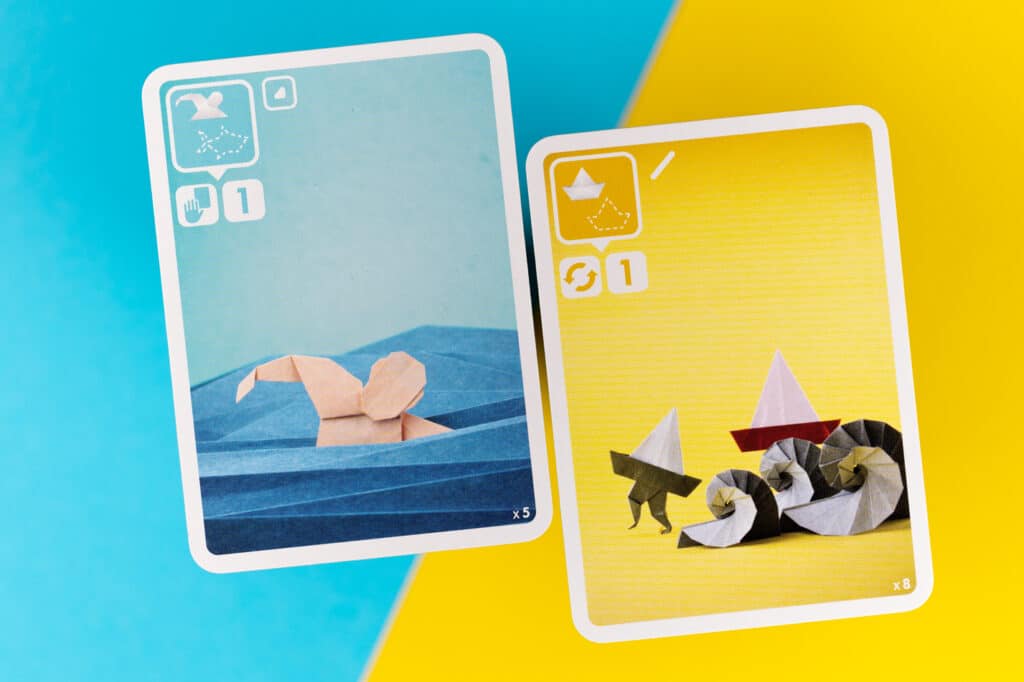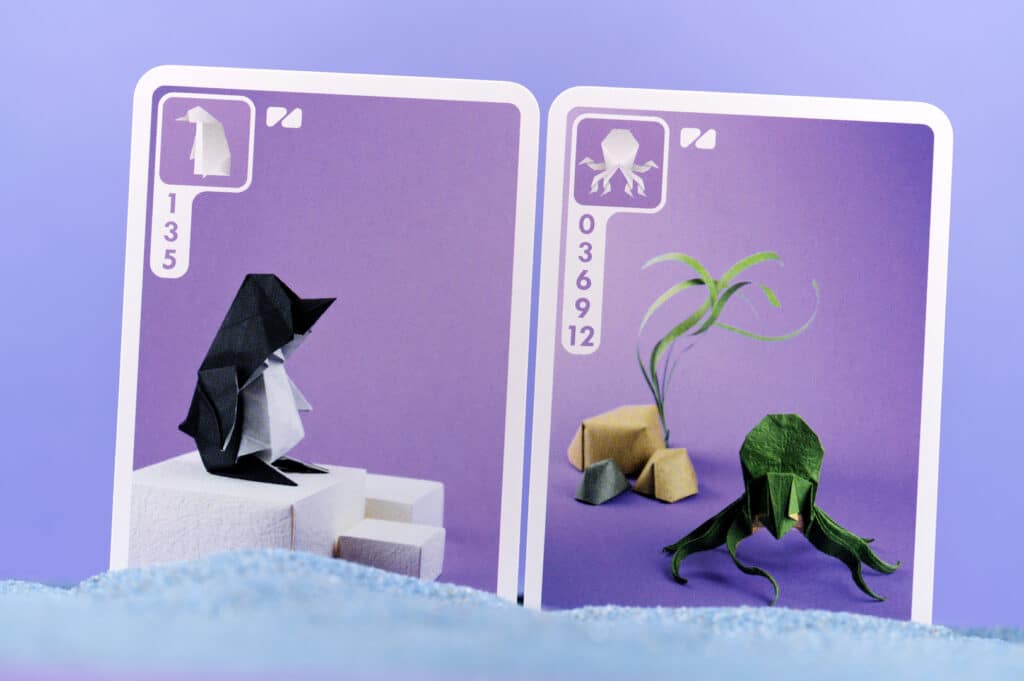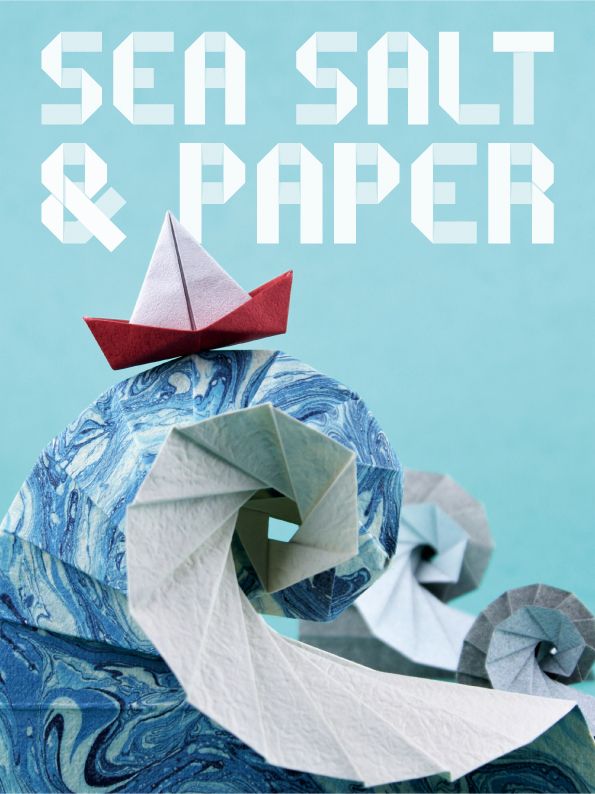Sea Salt & Paper is a great game which now happily nestles in my travel back of 'card games to play anywhere with anyone' along with the likes of Scout and 6 Nimmt. The post Sea Salt & Paper...
This aquatic-based game made waves earlier this year (pun absolutely intended) when it was first released. As with most games that arrive riding the crest of a wave of hype (another sea pun there) I waited until the fuss had died down to see if it’s still getting talked about and still getting played, and it is. Rightfully so, too, because Sea Salt & Paper is a great game which now happily nestles in my travel back of ‘card games to play anywhere with anyone’ along with the likes of Scout and 6 Nimmt.
If you know either of those games then you know that’s some pretty high praise right there. Sea Salt & Paper is another of those games which feels like it’s a much older, tried & tested game, just being surfaced to a bigger audience for the first time. That’s the mark of a classic game in my opinion.
Frog base, bird base, mountains and valleys
The first thing that’ll strike you about Sea Salt & Paper is how gosh darn pretty it is. Each card represents something sea-related, from mermaids and swimmers to crabs and octopuses. Instead of plain illustrations or stock photos (or the inutterable awfulness of AI-generated images), the cards feature photos of origami models of each of the things. As someone who’s messed around with origami for the last 40 years, I love it.
These cards are gorgeous.
 Duo cards are worth a point when played as a pair, and reward you with bonus actions.
Duo cards are worth a point when played as a pair, and reward you with bonus actions.
It means the game has a look unlike pretty much everything else out there, and I love it. One other thing of note is the designer’s choice to use something called ColorADD. If you can’t be bothered to follow the link, ColorADD is a colour alphabet, whereby colours are assigned symbols. Those symbols can be mixed to make the symbols for other colours, so if you combine the symbols for red and blue, you get the symbol for purple. It’s the first time I’ve come across ColorADD, and I sincerely hope it’s not the last. In a game where cards’ colours are really important, it means the game is accessible to colourblind people too.
Other than those very welcome breaks from the norm, everything else here is by the book. The game costs less than a round of drinks in Wetherspoons and comes in a cardboard box just big enough to house its 64 cards.
Gimme, gimme, gimme
Playing Sea Salt & Paper is super easy. On your turn, you either take a card from the top of either discard piles, or draw two from the top of the deck, keep one, and discard one. If you’ve got a pair of duo cards (cards which score for having pairs of them) you can play them in front of you for a bonus action, like drawing another card or stealing a card from an opponent. Other cards score points for collecting multiple copies of them, or give multipliers to other symbols on your cards. Nice and easy.
 Collector cards like these reward you for having multiple of the same type in your hand.
Collector cards like these reward you for having multiple of the same type in your hand.
What keeps the game ticking and makes it more interesting than most other card games is the way each round ends. Once you get a total of seven points you can end the round. Note the italics there. Nobody’s forcing you to. The world won’t end if you don’t stop the game. Once you do decide to end the round you announce one of two things. And yes, I mean ‘announce’. It says so in the rules leaflet. No casual ‘saying’ things here, it’s announcing all the way.
So you get seven points, you rise from your seat, hold one hand aloft and announce either STOP or LAST CHANCE. If you say ‘stop’, the round ends and everyone scores the cards in their hands. It’s all very civil. ‘Last chance’, however, gets spicy. Each other player gets one last turn, but when the scores are totalled if the player who called ‘last chance’ is still the highest scoring, they score not only their cards but also the colour bonus, which is a point per card of the colour you have the most of. The losing players only get the colour bonus. Should the challenging player lose, they only get their colour bonus, while every other player scores their cards as normal.
 I think the crabs are my favourite. They’re too cute!
I think the crabs are my favourite. They’re too cute!
I love having the rounds end this way. There’s no line in the sand which triggers the end as soon as it’s crossed. You can hang on for a turn or two, hoping to get some more collector cards maybe, so that when you do trigger it – BAM! – look at all those sweet, sweet points. Hooo mama. The gambling aspect might not seem that big a deal, but when scores are close to winning the whole game, an extra point or two might be all you need. It’s a really clever, really enjoyable little twist which makes the game feel unique.
Final thoughts
It’s very easy for me to recommend Sea Salt & Paper. It’s hard not to recommend a game that’ll cost you around £10 and take up next to no room on your shelves. But this isn’t just a lazy “Why not?” recommendation, this is a “You should get this game because it’s a very good game” recommendation. Sea Salt & Paper is excellent.
You might find the first round or two a little clunky with new users, but that soon evaporates. It’s an odd feeling to play a card game where you start with no cards in your hand and frequently have fewer than three. There comes a point after a game or two where you start to understand the frequency of cards and how likely they are to appear. I mean, the numbers of each card type are printed right there on the card, but knowing those numbers means nothing until you weave them into the context of the game.
Sea Salt & Paper is one of those games that you might break out with the family to fill half an hour, but find yourself still playing an hour later. You’ll take it to your games group as a filler for the start or the end of the evening, but end up playing it more than you expected. It’s quick, easy, very pretty, and has a level of immediacy and interaction which really puts the polish on the whole thing. It’s a fantastic little game, and you should own a copy.
I wasn’t provided with a copy of the game. I bought a copy and wrote about it because I love it.
If you enjoyed this review and would like to read more like this, consider supporting the site by joining my supporters’ membership at either Patreon or Ko-fi. It starts from £1 per month, offers member benefits, and lets me know you’re enjoying what I’m doing.

Sea Salt & Paper (2023)
Design: Bruno Cathala, Théo Rivière
Publisher: Bombyx
Art: Lucien Derainne, Pierre-Yves Gallard
Players: 2-4
Playing time: 30 mins
The post Sea Salt & Paper Review appeared first on Punchboard.


